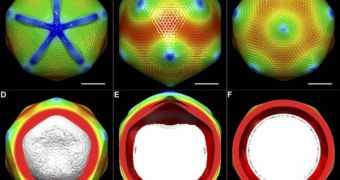Usually, when virologists come across a new species of viruses, they find it very easy to classify it, at least as far as its outer look and internal make-up go. It's only on very rare occasions that they find one so weird, that they can't say for sure what kind of pathogen it is. Yet, such was the case with mimivirus, which has ignited controversies among scientists ever since it was first discovered in 1992, infecting amoebas in a Parisian water tower. Though it looked and acted like a virus, it had a size more similar to that of a microbe, and its genetic material encoded information that was traced back to bacteria.
When looking at the mimivirus, the experts first hypothesized that it was a microbe, and for good reason. The pathogen is a few orders of magnitude larger than any other known virus, which has prompted a number of delays in its research. That is to say, it took experts about 11 years to be able to classify the organism as a viral agent, although, even when they did, the definition did not completely match it. Because of its complexity, some have argued that the 1992 find could be the missing link between viruses and living cells, as in an organism at the boundary between life and death.
Microscope scans revealed that the pathogen had the same generic constitution as an average viral agent, as in it had an outer layer made of proteins – which is known as the capsid – and an inner core, which contained the DNA information. But, unlike its smaller counterparts, the mimivirus has a huge gap between the capsid and the nucleus, a setup that closely resembles the organizing principle inside living cells. In addition, rather than having the DNA strands tightly packed together, the organism displays a large opening, allowing the genetic information to “float” inside the virus in very much the same way a regular nucleus floats inside the cytoplasm of a cell.
In a new scientific study, published in the April 28th issue of the journal PLoS Biology, experts, including Chuan Xiao, Yurii G. Kuznetsov, Siyang Sun, Susan L. Hafenstein, Victor A. Kostyuchenko, say that, “The new structural finds, along with previous genetic and morphological work, confirm that mimivirus is an odd mix of genes and parts found in viruses, bacteria and even eukaryotes, the organisms that sequester their DNA in a nucleus.”
In addition, previous studies, led by National Center for Biotechnology Information researcher Eugene Koonin, have revealed that mimiviruses can actually become infected by other viruses, a trait seldom found in the viral world. This is rather something that defines life – the ability to get infected. “They’re part of the biosphere, and that’s more than enough for me,” Koonin said last year, Wired reports.

 14 DAY TRIAL //
14 DAY TRIAL //